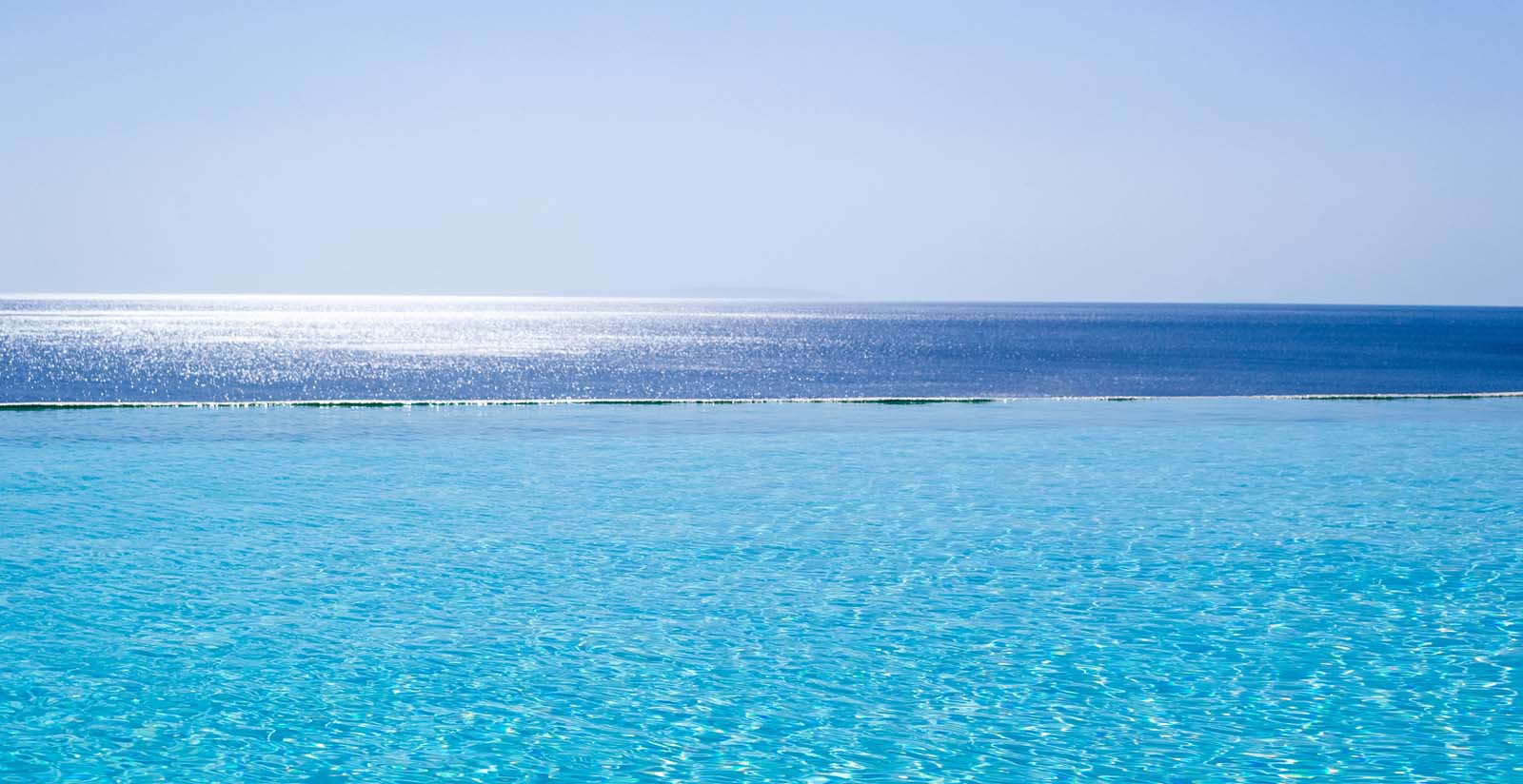
The area of Petra has been inhabited since ancient times, as can be seen from the tombs revealed on the Keramidaria site. According to legend, Achilles anchored here in the immense bay on his way to the Trojan War.
Although smaller than Molyvos, just 4 km further north along the coastal road which connects them, Petra is similar in many ways with small streets of cobbled stone and hidden treasures.
Shopping is good with many small galleries and gift shops as well as a local Ouzo distillery and bars and restaurants. Ouzo is an anise-flavoured drink that is widely consumed in Greece and Cyprus, and a symbol of Greek culture. Pic credit: Vincent Ketels
A romantic old village on the northern coast of Lesbos, Petra is full of narrow cobblestone streets, pretty squares and terracotta buildings. It’s also home to an unusual attraction: a big rock that soars high above the rooftops, with a charming church at the top. This is a beachside village with more to offer you than just the holiday staples of sun, sea and sand.
Petra is the kind of place where shopping and sightseeing perfectly merge. In the atmospheric streets around the rock and main square, you can browse little shops selling locally crafted wood, jewellery and art, and tour a small Ouzo distillery that’s been run by the same family for generations. You might also find yourself walking past Vareltzidaina’s House, the restored home of a 19th-century merchant. It’s worth going in for a look around if you’re interested in local history, or are looking for something a little different to do on your holiday. But by far the best of all the sights in Petra is the view from the top of the rock, so set aside some time to climb the steps to Panagia Glykofilousa, the church that overlooks the whole village and beyond.
Above all, Petra is a perfect choice for a laid-back beach holiday, where you can walk barefoot on soft, golden sand and snorkel with colourful fish in the clear blue water. You can hire sun loungers and parasols, and the beach has been awarded the Blue Flag for quality. If you’d like a change of scenery, you’ll find another great beach nearby in the resort of Avlaki, which is about 1.5 kilometres away. There are a couple of tavernas and a café there, but that’s nothing compared to what’s available beside Petra’s beach. Lined with tavernas, bars and cafés, the Petra seafront comes to life as the sun starts to set. It’s a sociable place to toast the end of a relaxing day or dance the night away.
Set around a turquoise bay on Lesvos’ northern coast is the traditional fishing village of Petra. The village’s Blue Flag-awarded beach backs into a historic village filled with cobblestone streets and terracotta buildings, interspersed with local tavernas, markets and important landmarks like the Panagia Glykofilousa. After dark, Petra develops a sociable nightlife scene focused around its traditional seafront tavernas.
Lesvos with many streams, rich flora and fauna, famous olives groves, the mild Mediterranean climate, charming traditional villages and remarkable examples of industrial architecture (olive presses, soap factories, tanneries) dating from the Island’s industrial development in the 19th century, impress all visitors.
In prehistoric times, it was called Lassia due to its luxurient forest vegetation. It was also called Imerti (delicious), Pelasgia, Eolida and Makaria. The name Lesvos was from the mythical hero Lesvos who came here with Lapithes from Thessaly and married Mythimna, daughter of the settler Makaras. During prehistoric times it was a significant cultural centre of the NE Aegean Sea, and it flourished economically, commercially and culturally during Archaic times (7th – 6th century BC).
The contribution of Lesvos to the arts and letters has been invaluable. Eminent personalities such as Arion, Terpandos, Theophrastos, Pittakos Mitilineos, Theophilos, Il. Venezis, Str. Myrivilis, Arg. Eftaliotis (Kleanthis Michailidis), G. Iakovidis and the plastic artist Str. Elefteriadis were born here. Additionally, the Nobel prizewinning poet Odysseas Elytis was of Lesvian descent.
Mytilene is the Capital of Lesvos and of the Prefecture (with approximately 30,000 residents), and is one of the most ancient Greek cities, the administrative centre and the seat of Lesvos Prefecture, the Aegean Marine Ministry, the North Aegean Region and the Aegean University. It extends over seven hills and the traditional houses coexist harmonically with neoclassic mansions, Byzantine temples, refugee neighbourhoods and ancient monuments.
source: visitgreece.gr